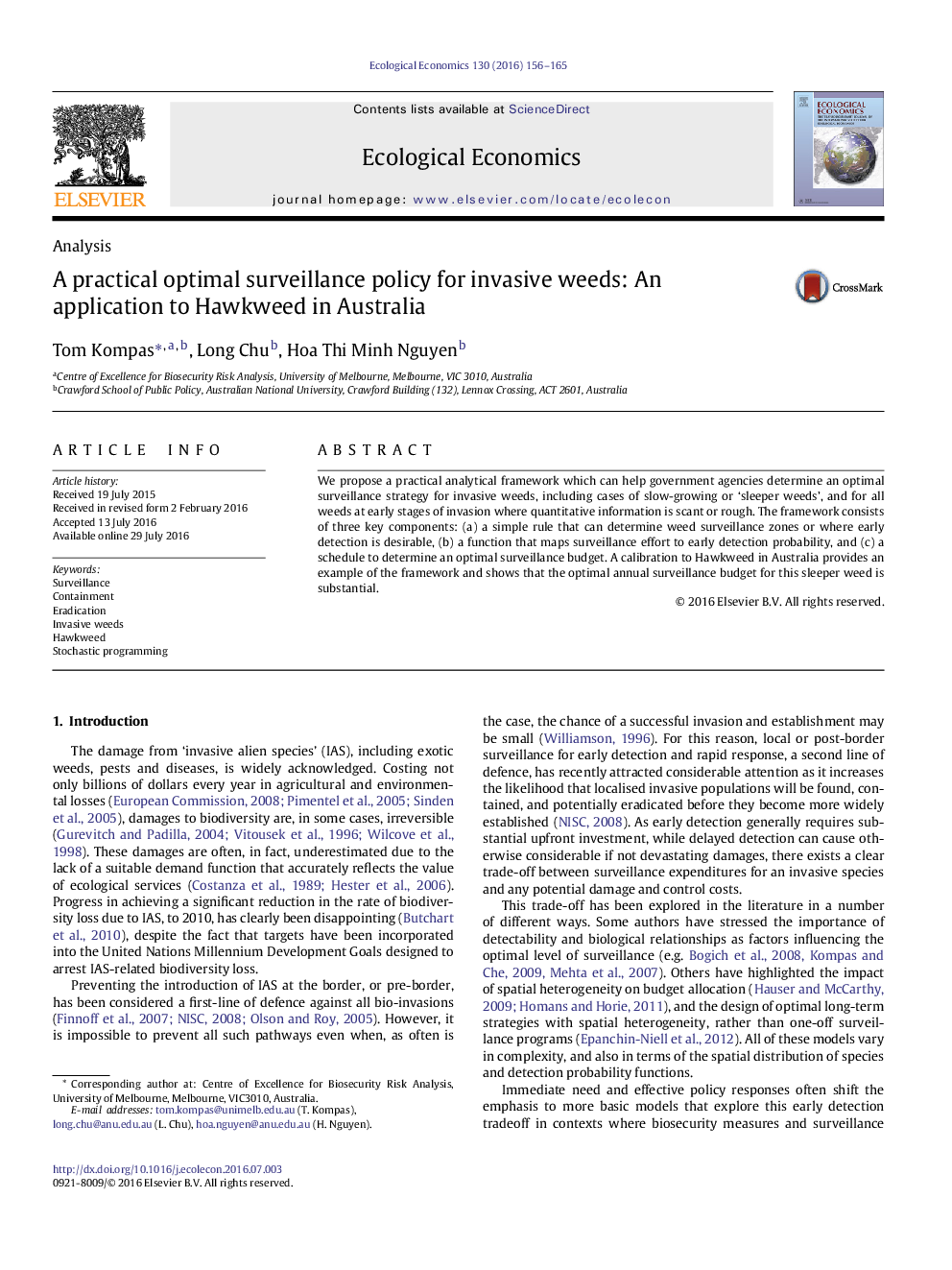| Article ID | Journal | Published Year | Pages | File Type |
|---|---|---|---|---|
| 5048962 | Ecological Economics | 2016 | 10 Pages |
Abstract
We propose a practical analytical framework which can help government agencies determine an optimal surveillance strategy for invasive weeds, including cases of slow-growing or 'sleeper weeds', and for all weeds at early stages of invasion where quantitative information is scant or rough. The framework consists of three key components: (a) a simple rule that can determine weed surveillance zones or where early detection is desirable, (b) a function that maps surveillance effort to early detection probability, and (c) a schedule to determine an optimal surveillance budget. A calibration to Hawkweed in Australia provides an example of the framework and shows that the optimal annual surveillance budget for this sleeper weed is substantial.
Related Topics
Life Sciences
Agricultural and Biological Sciences
Ecology, Evolution, Behavior and Systematics
Authors
Tom Kompas, Long Chu, Hoa Thi Minh Nguyen,
